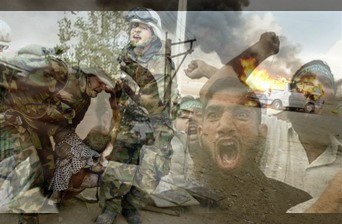SAS Secret Wars
This is for the "progressive" bloggers who were eager to depict the British as retreating from southern Iraq:
A 16-man assault team moved in, including four SAS snipers whose usual weapon is an AWS rifle with telescopic sights. Smaller than a standard sniper rifle and with a range of only 300 yards, its shot sounds like an air gun.
Three snipers would each target one bomber; the fourth was to take out any bomber who did not go down immediately. Behind the SAS a quick reaction force of paratroopers and bomb disposal experts waited.
In the rising heat of a July morning, the team lay hidden around the safe house. An Arabic-speaking intelligence officer, monitoring the voices inside, warned: “Targets preparing to exit.” The snipers readied themselves. When all three bombers were in clear sight, the commander gave the order to fire. The sniper rifles were barely heard as the bombers jerked and hit the ground.
U.S. and British Special Forces:
THE usual number of UK special forces in Baghdad is close to 400 men: a single 60-man SAS “sabre” squadron; a company of paratroopers, Royal Marine commandos and RAF Regiment personnel from the Special Forces Support Group; a squadron from the Special Reconnaissance Regiment; and a squadron of radio monitoring experts from 18 (UKSF) Signal Regiment. They also have specialist signallers from 264 (SAS) Signal Squadron, specially fitted-out RAF Chinook helicopters from 7 Squadron and C-130 Hercules transport aircraft from 47 Squadron.
The US has about 47,000 “special forces”; but only about 1,200, including Delta Force and Seal Team Six, are comparable to British special forces units.
And yet some of the operational differences, if true, are embarrassing for American Special Ops:
“The problem from the start was that operational training and procedures for the top UK and US special operations forces are vastly different,” one British source said.
In Iraq, British special forces aim to merge into the background, driving battered local cars and wearing cheap clothes bought in markets. They looked on aghast at their US colleagues who initially drove around in new Dodge pickups.
“We used to laugh when we saw the Americans around the green zone,” one source said. “They would be wearing designer jeans, heavy boots and T-shirts - that was their idea of local dress. To a man they would all have pistols strapped to each leg with black plastic holster and webbing, and of course they would be wearing the latest shades. We called it ‘living the dream’.”









No comments:
Post a Comment